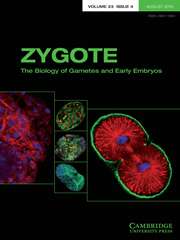No CrossRef data available.
Article contents
Day 3 embryo assessment does not provide a reliable prediction for blastocyst formation and designation: a retrospective cohort study
Published online by Cambridge University Press: 23 September 2024
Summary
Although many Fertility Centers have adopted day 5 or 6 embryo transfer policy, yet, 30% of embryo transfers in the US are performed on day 3. This is mainly due to concerns related to longer embryo culture effect and higher rates of embryo transfer cancellation on day 5, with no effect on cumulative pregnancy rate. We conducted a retrospective cohort study comparing individual embryo transfer order rank, best embryo for fresh transfer and intention to freeze, of day-3 and day-5 embryos based on their morphology score. Day-3 embryos of each patient were ranked by embryologists for the order of transfer and intention to freeze, based on morphological score, blinded to actual blastulation outcome. The corresponding blastocysts were similarly ranked for the order of transfer and vitrification intention. Ranking was compared to test the predictive value of day-3 morphological assessment. Sixty patients with 784 day-3 embryos were included. There was only a moderate positive significant correlation between ranks on day-3 and ranks on day-5 [r = 0.662 95% CI (0.611–0.706, p < 0.001)]. Only 25% of the best embryos for transfer on day 3 (rank = 1) were chosen for fresh transfer on day 5. A total of 441 embryos were intended to be frozen on day 3. Of those, 201 were not transferred nor vitrified on day 5–6 (45%), 3.35 embryos per patient. No significant difference was found between average day-3 rank of embryos ranked 1, 2 (3.12 vs 4.12, p = 0.074) and 3 (3.12 vs 4.08, p = 0.082) on day-5–6. To conclude, this study brings a different perspective to the comparison of day 3 and day 5 by following each embryo’s putative and actual designation. Day-3 ranking of embryo morphology did not provide a reliable prediction for blastocyst formation, transfer order and vitrification intention, and may support transfer or cryopreservation of blastocysts over cleavage stage embryos.
- Type
- Research Article
- Information
- Copyright
- © The Author(s), 2024. Published by Cambridge University Press



